The family member’s of the patient contacted a law firm after the patient’s death. A lawsuit was initially filed in state court, alleging medical negligence. When a malpractice lawsuit is filed, the initial claims by the plaintiff are termed a “complaint”. As the lawsuit progresses, the plaintiff can request permission to amend their complaint under certain circumstances.
In this case, the plaintiff’s 3rd Amended Complaint included allegations of an EMTALA violation. EMTALA violations fall under the jurisdiction of federal court, therefore the lawsuit was referred from state court to federal court.
From this documentation, we can see that the lawsuit against the individual physicians, as well as the private EM group and the surgery center, did not proceed to trial. A settlement occurred, which was also confirmed by Med Mal Reviewer via phone with the county’s court clerk. The terms of the settlement with the individual physicians are confidential.
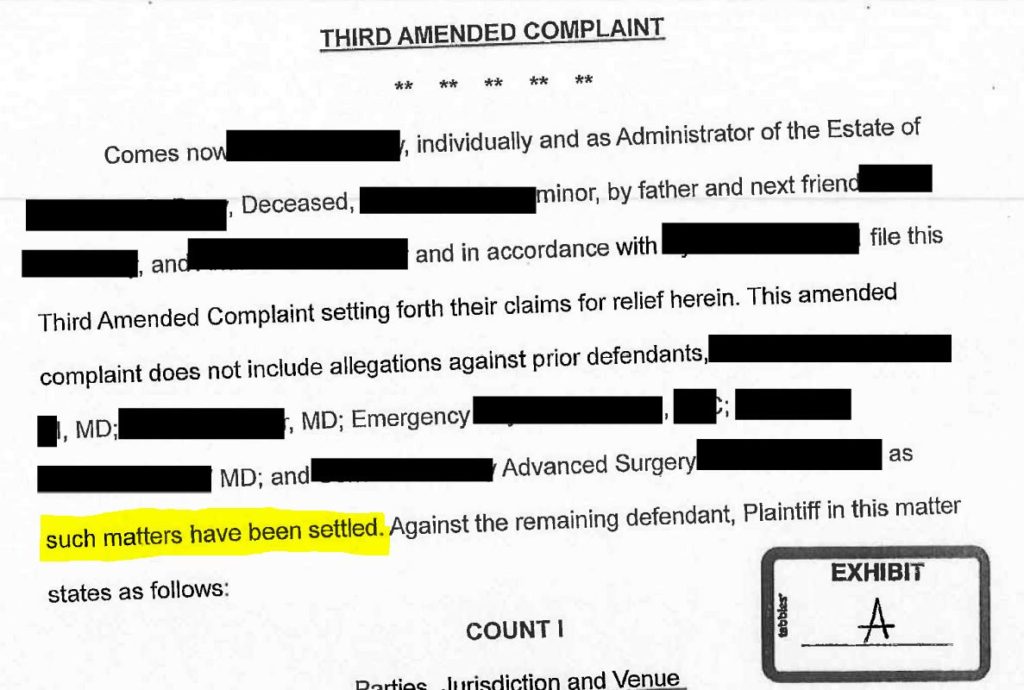
The only remaining defendant in the case with the hospital. As discussed in previous Med Mal Reviewer cases, EMTALA holds hospitals liable, but not individual physicians. Relevant portions of the 3rd Amended Complaint are shown here:
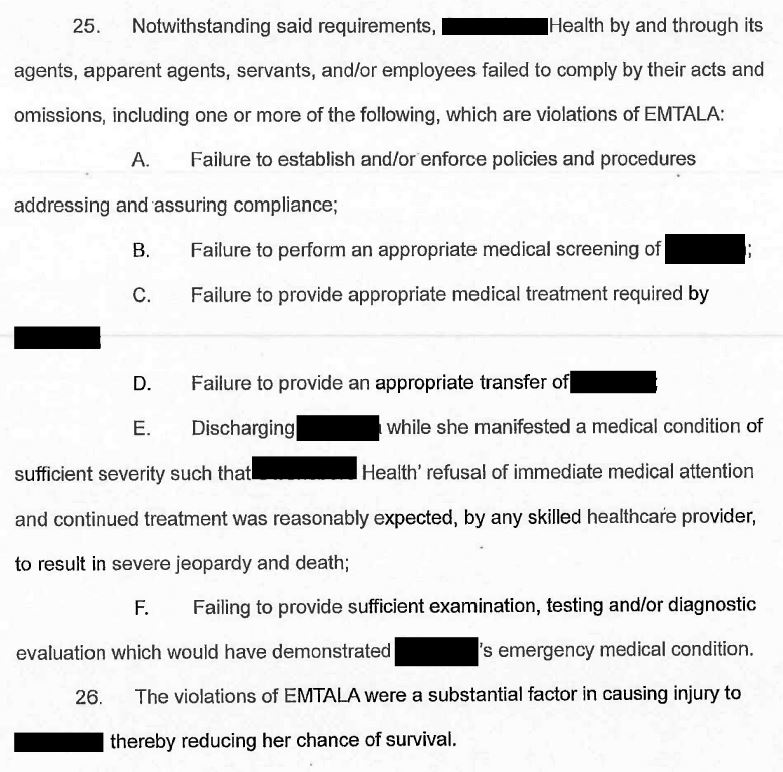
The defense team rejected the claim that there was an EMTALA violation. They note that an EMTALA violation can only occur if an emergency medical condition is actually identified and subsequently not stabilized. They cite previous cases where this has already been clearly defined.
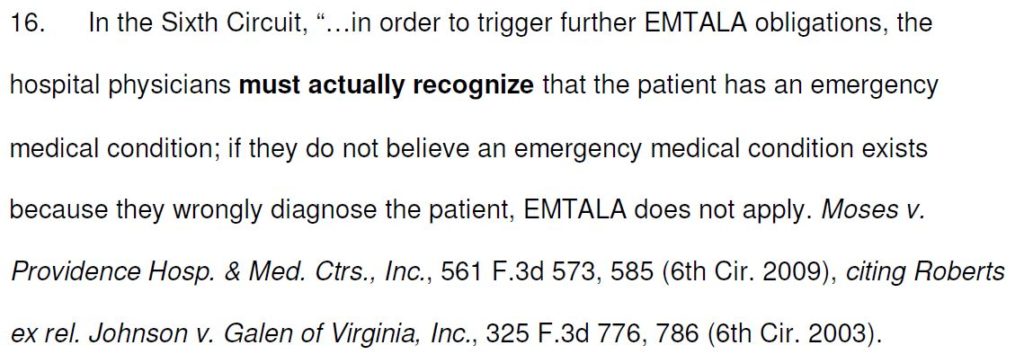
Applying this concept, the defense notes that plaintiff already has stated that the physicians did not identify an emergency condition, which was part of their negligence claim. By doing so, the plaintiff had directly contradicted their own argument in regards to EMTALA.

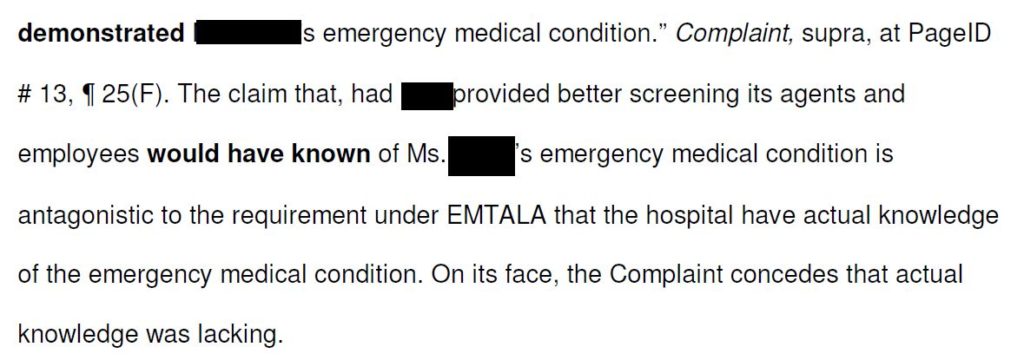
The judge reviewed the information, and ultimately sided with the defense.
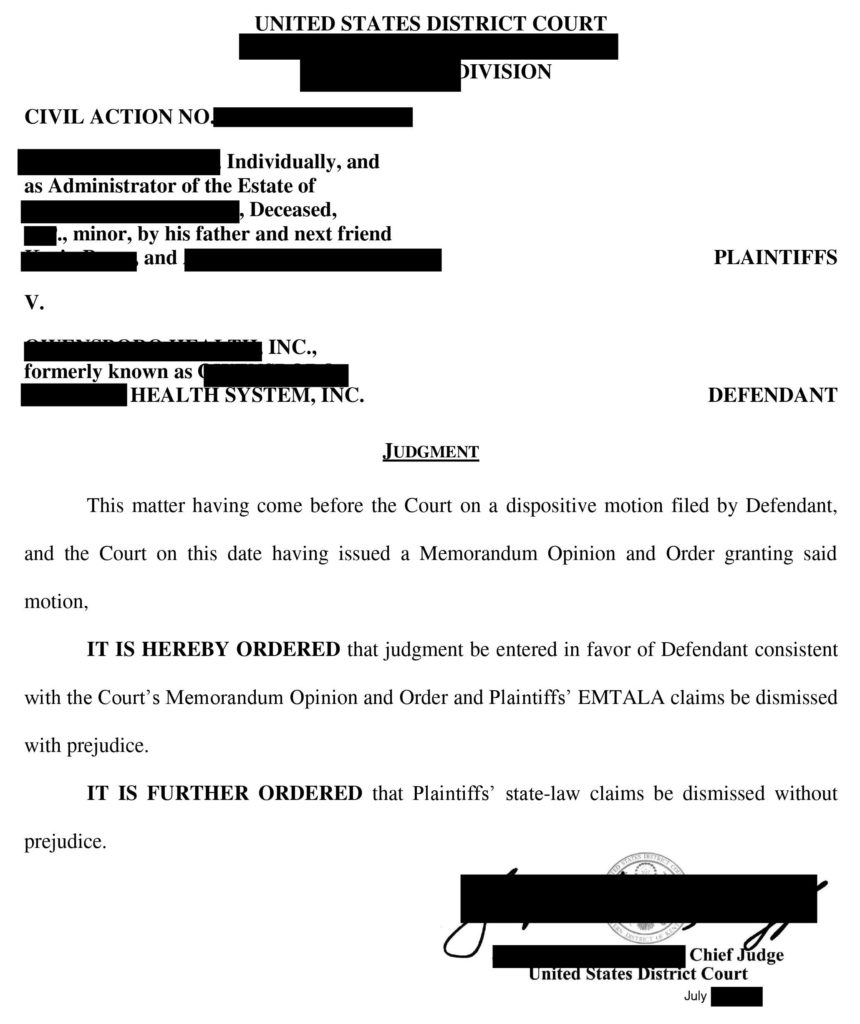
Bonus content is available for download below. It consists of the plaintiff’s 3rd Amended Complaint (pages 1-7) and the defense’s motion for judgment (pages 8-17). These documents are tedious but help illustrate some of the more important legal aspects of the case. They open a view into a malpractice attorney’s work in a medical malpractice lawsuit.